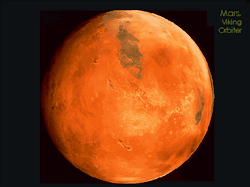Thu, May 23, 2013
Subcommittee Chair Call Mars Mission A Congressional Priority
The House Science Committee Subcommittee on Space held a hearing Tuesday to examine possible options for the next steps in human space flight and how these options move the U.S. closer to a human mission to Mars and beyond. Witnesses debated whether the Obama administration’s proposed asteroid rendezvous mission is a better precursor for an eventual manned mission to Mars compared to other missions, such as a return to the Moon.

“Human space flight represents the aspirations and ambitions of the American people," said Chairman Lamar Smith (R-TX) (pictured). "Not long ago, the exploration of Mars was considered science fiction. Today, with two active Martian robotic missions on-going, it’s no longer fiction at all. Space exploration goes beyond rockets and avionics; it is about hope for the future. NASA should have a well thought out and convincing plan before committing scarce resources. The trip to Mars will not be a direct one. We will need to train for it before we send a crew, much like the Apollo missions.”
As NASA prepares to take the next steps in human exploration of the solar system there are many unanswered questions about the correct path to Mars. NASA will need to acquire new capabilities to travel to Mars and beyond. The two most commonly discussed possibilities for precursor missions to Mars involve manned missions to the Moon or an asteroid.
“As we move forward in the next few months with the NASA Authorization Act, Congress must address our path to Mars and beyond so there will be no question as to where we are headed and how we will get there," said Space Subcommittee Chairman Steven Palazzo (R-MS). "I believe the decisions we make today will determine whether the U.S. maintains its leadership in space tomorrow. In the future, as in the past, I hope we will be able to focus mission priorities and goals to ensure our best chances of success.”

There are several compelling reasons for using the Moon as a training ground to prepare for more complex missions. Landing on the Moon would develop technical capabilities for landing on and launching from a large celestial body, something NASA has not done for more than four decades. Establishing a semi-permanent or permanent presence on the Moon would give astronauts an opportunity to work and live in an environment radically different from Earth.
The Obama administration has instead proposed a robotic capture and redirection of an asteroid to lunar orbit for astronauts to later visit. The mission concept is based on a study by the Keck Institute for Space Studies that estimated the cost of such a mission at approximately $2.6 billion. NASA has not identified a budget profile for this mission beyond FY 2014.
More News
Circle To Runway (Runway Number) Used by ATC to inform the pilot that he/she must circle to land because the runway in use is other than the runway aligned with the instrument appr>[...]
Aero Linx: National Aviation Safety Foundation (NASF) The National Aviation Safety Foundation is a support group whose objective is to enhance aviation safety through educational p>[...]
At Altitude Of About 250-300 Ft Agl, The Airplane Experienced A Total Loss Of Engine Power On November 6, 2024, at 1600 central standard time, a De Havilland DHC-1, N420TD, was inv>[...]
From 2009 (YouTube Edition): Three Hour Flight Was 'Flawless' -- At Least, Until Mother Nature Intervened For anyone who loves the aviation business, this was a VERY good day. Afte>[...]
Also: AMA Names Tyler Dobbs, More Falcon 9 Ops, Firefly Launch Unsuccessful, Autonomous F-16s The Air Force has begun ground testing a future uncrewed jet design in a milestone tow>[...]
 ANN's Daily Aero-Term (05.05.25): Circle To Runway (Runway Number)
ANN's Daily Aero-Term (05.05.25): Circle To Runway (Runway Number) ANN's Daily Aero-Linx (05.05.25)
ANN's Daily Aero-Linx (05.05.25) NTSB Prelim: De Havilland DHC-1
NTSB Prelim: De Havilland DHC-1 Classic Aero-TV: The Boeing Dreamliner -- Historic First Flight Coverage
Classic Aero-TV: The Boeing Dreamliner -- Historic First Flight Coverage Airborne-NextGen 05.06.25: AF Uncrewed Fighters, Drones v Planes, Joby Crew Test
Airborne-NextGen 05.06.25: AF Uncrewed Fighters, Drones v Planes, Joby Crew Test




